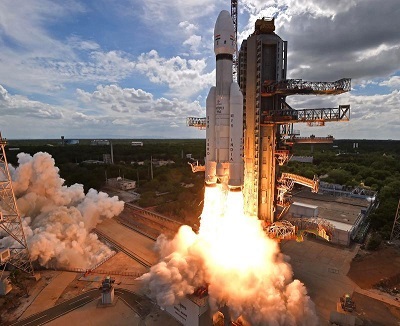Context-
The Indian Space Research Organisation (ISRO) is currently facing an unexpected problem: it has a surplus of rockets but a shortage of satellites to launch. This issue has emerged as ISRO shifted from a supply-driven to a demand-driven model in 2019-2020, leading to a mismatch between the number of available launch vehicles and the demand for satellite launches.
Transition to a Demand-Driven Model
- Supply-Driven to Demand-Driven Shift : Historically, ISRO followed a supply-driven approach, where it would launch satellites first and then seek customers for the services these satellites provided. However, with the Indian government's space sector reforms in 2019-2020, ISRO adopted a demand-driven model. In this new approach, satellites are built and launched only if there is existing demand for them. This shift has contributed to the current situation where ISRO’s launch vehicle capacity far exceeds the demand for satellite launches.
- Expert Insights : In June, S. Somanath, Chairman of ISRO and Secretary of the Department of Space, highlighted that ISRO’s launch vehicle capability is three times the current demand. This statement has led many experts to interpret that the space launch market is facing a downturn. Somanath emphasized the need for strong domestic demand for launch vehicles to address this imbalance.
India’s Launch Vehicle Fleet
Current Launch Vehicles
India possesses four main launch vehicles:
- Small Satellite Launch Vehicle (SSLV)
- Polar Satellite Launch Vehicle (PSLV)
- Geosynchronous Satellite Launch Vehicle (GSLV)
- Launch Vehicle Mark-III (LVM-3)
These rockets can launch satellites weighing up to four tonnes to geosynchronous orbit. For satellites exceeding this weight, India relies on foreign launch vehicles, such as Europe’s Ariane V and SpaceX’s Falcon 9.
Demand related Problem
- Educating the Customer : The transition to a demand-driven model has introduced a “chicken and egg” problem. Potential customers need to be educated about the benefits of satellite services to create demand. This demand then justifies the need for launching new satellites. The question arises: Who is responsible for educating the customers – ISRO or the private industry?
- Creating Demand : Without sufficient customer education, the expected scale of demand that ISRO anticipates will not materialize. Potential customers include companies, government institutions, defense enterprises, and the general public, such as farmers and bankers. The task of educating these diverse customer groups is immense.
Future Demand Drivers
- Human Spaceflight : One significant future demand driver is human spaceflight. This includes human-rated launch vehicles for transporting astronauts and supplies to destinations like space stations or the moon. There is also potential for space tourism, which could generate additional demand.
- Launch Capability Enhancements : India’s current launch vehicles face limitations. For instance, the LVM-3, with less than one-third of the capability of China’s Long March 5, would require two launches to accomplish missions similar to China’s Chang’e 4. ISRO plans to upgrade the LVM-3 with a semi-cryogenic engine to increase its payload capacity to six tonnes to geostationary transfer orbit (GTO). Additionally, the proposed Next Generation Launch Vehicle (NGLV), or Project Soorya, aims to carry 10 tonnes to GTO, pending funding approval.
Encouraging Smaller Satellites
- SSLV Development : ISRO needs one more successful flight of the SSLV to validate its capability for launching smaller satellites, which are often experimental or university-built. Success in this domain could encourage space companies to develop larger satellites, eventually increasing demand for launch vehicles.
Launch Vehicle Economics
- Satellite Lifespan and Replacement : Satellites have a finite mission life and will need replacement as they age, generating ongoing demand for launch vehicles. However, advancements in software and hardware are extending satellite lifespans, complicating estimates of launch vehicle requirements.
- Technological Improvements : Launch vehicles are becoming more efficient. The PSLV can now deliver multiple satellites to multiple orbits in a single launch. Reusable rocket stages reduce costs and increase profitability. ISRO is developing Reusable Launch Vehicle (RLV) technology and exploring green alternatives to toxic rocket fuels.
The Role of the Private Sector
- Ecosystem Development : Somanath suggested that a thriving ecosystem is necessary to create demand for satellite services, which in turn drives the need for launch vehicles. The Indian government envisions the private sector playing a crucial role in generating this demand, building, and launching satellites, and offering services to both domestic and international customers.
- Government as an Anchor Customer : Private companies prefer the government to be their customer, providing a reliable revenue stream over time. This approach mirrors the U.S. model, where government contracts support private space companies like SpaceX and Blue Origin. By acting as an anchor customer, the Indian government can help private companies during their early stages.
- Transitioning from Government to Private Sector : Ultimately, the government aims to exit the launch vehicle business, leaving it to private companies once there is sufficient demand. This transition involves the government absorbing the costs of moving from a supply-driven to a demand-driven model and educating its own ministries to create anchor demand for satellites and launch vehicles.
Conclusion
ISRO’s current challenge of having more rockets than satellites to launch stems from the transition to a demand-driven model and the need for customer education to generate sufficient demand. Future demand drivers, such as human spaceflight and technological advancements, offer potential solutions. However, developing a robust ecosystem with active private sector participation and government support as an anchor customer is crucial for a sustainable and thriving space industry in India.
|
Probable Questions for UPSC Mains Exam-
|
Source- The Hindu







